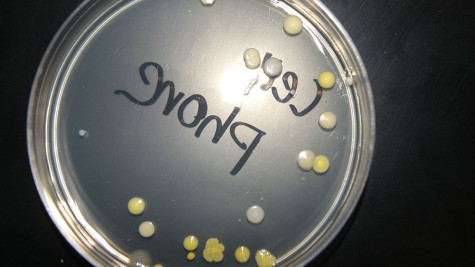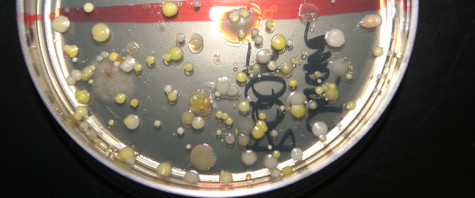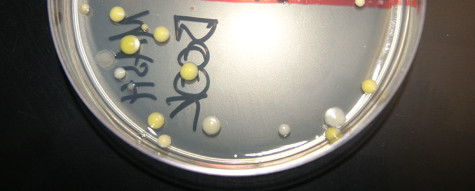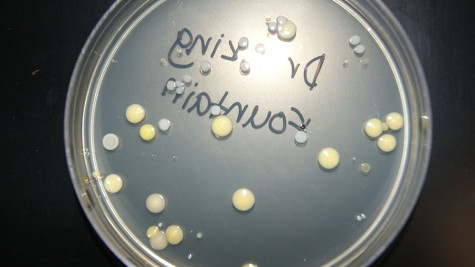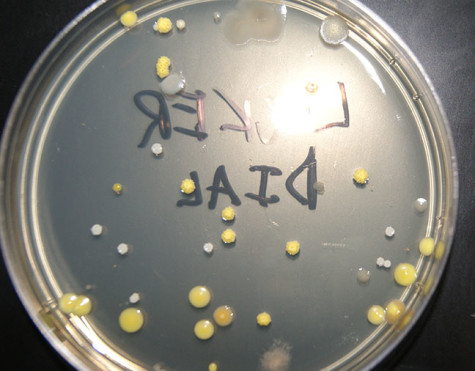Libertyville or GERMany?
February 19, 2015
Just as the flowers bloom in the spring, winter seems to be the time when germs fester into sickness at Libertyville High School. Between drinking fountains, railings, textbooks, and much more, students wage a daily battle against the objects they come in contact with throughout the school day. These pathogen and bacteria-ridden surfaces are major causes for student sicknesses, and it is nearly impossible to avoid them all.
According to ScrubClub.org, a website published by the National Sanitation Foundation (NSF), an organization dedicated to public health and safety, there is bacteria on almost all surfaces of a school. Though some bacteria is dubbed “good bacteria,” meaning non-detrimental and often times beneficial to bodily processes, the presence of good bacteria also lends itself to the presence of sickness-causing bacteria. Common ailments found in schools can include, but are in no means limited to, the flu, the common cold, salmonella and E. coli.
The human body’s main defense against sickness resides in the immune system, which protects the body against harmful germs. Sickness takes place when the immune system is weakened by exposure to detrimental bacteria. When this occurs, “[the] body is invaded by all sorts of bacteria, microbes, parasites… None of these things are able to get in when your immune system is working, but the moment your immune system stops the door is wide open,” wrote Marshall Brain, a researcher on the Howstuffworks blog, a website that provides simplistic explanations for complex processes.
In order to fully understand the many illnesses that seem to haunt the halls of LHS, it is crucial to see what the students and staff are up against. In an effort to accomplish this task, DOI has teamed up with Mrs. Tiffany Owens, a biology teacher, to bring readers a close-up view of the bacteria-filled world that is LHS.
To test for the aforementioned germs, each of the following locations were swabbed with a Q-tip, and then the Q-tip was wiped on a petri dish coated in a growth-stimulating agar. When swabbed for germs and incubated for a duration of five days (Friday morning to Tuesday afternoon), the colonies of bacteria, fungi, and other pathogens grew visible to the naked eye.
LHS nurse Ms. Cameron Traut sees students in the nurse’s office for illnesses like the cold, flu and other stomach bugs frequently; she states that those are the most common reasons for students missing school. The germs that cause these ailments are found on everyday surfaces around the school and spread through contact with other people. The main culprit: hands.
“Wash your hands, cough into your sleeves and use Kleenex,” said Ms. Traut. “It’s true germs are spread by hands, so when they talk about deep cleaning schools after certain viruses and outbreaks, that’s all fine and good until someone comes back into the building and starts touching things. That negates what you have just done.”
To prevent getting sick, hand washing is key, along with limiting the amount of contact with the eyes and face after touching something like a railing. Once students get sick, the biggest thing they can do to get better is to rest; according to Ms. Traut, it is the most effective way to bounce back early.
“The number one thing, everyone rolls their eyes when i say this, is to sleep and rest. It is true. Your body needs rest for your immune system to fight those bugs. Rest is key, meaning sleep. Going to bed earlier than you normally do. You will eventually fight it faster and shorten the course of the illness if you can allow your body to rest.”
Ms. Traut also explained that missing one day of school won’t kill students. Trying to push through illness will only prolong the problem.

For some people, the inviting look of a hand railing on the way up a staircase is intoxicating, almost irresistible. The extra support and grip provided by a railing make for an easy transition from the first to second floor, or the vice-versa. Once hand meets railing, there is an instantaneous transfer of bacteria, germs and microbes. Junior Toyosi Akinlade was never really scared of the railings: “You are always told that germs are everywhere, but I never really think about it when I use the railing.”
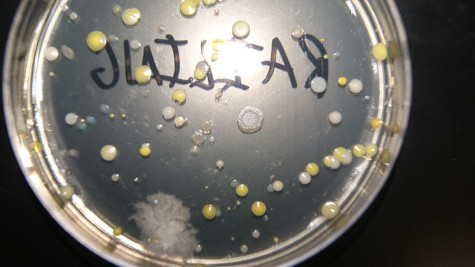 Upon the sight of the bacteria-covered petri dish, Akinlade was visibly disgusted: “I always knew there were a lot of germs in the stairwell, but actually seeing it is surprising. It made me not want to use the railings anymore.”
Upon the sight of the bacteria-covered petri dish, Akinlade was visibly disgusted: “I always knew there were a lot of germs in the stairwell, but actually seeing it is surprising. It made me not want to use the railings anymore.”

One of the most common places students expect to find germs is on their cell phones. The age of mobile technology has taken over; so many students use their phones excessively. Often times students will bring their phones everywhere. Senior Erik Dahlin said, “I’d say [I touch my phone] every five minutes, especially when I am [going to the bathroom]. I touch it a lot. Even when I’m not using it, I am usually holding it, so I’m almost always in contact with it.”
Dalhin was not very surprised when he saw the results of the test. If anything, he was underwhelmed. “I think [my phone] is absolutely disgusting. I even use it when I am in the bathroom. I think my phone is much worse. There are barely any dots on this petri dish; if it were my phone, it would be covered in dots, probably a lot bigger dots too,” explained Dahlin.
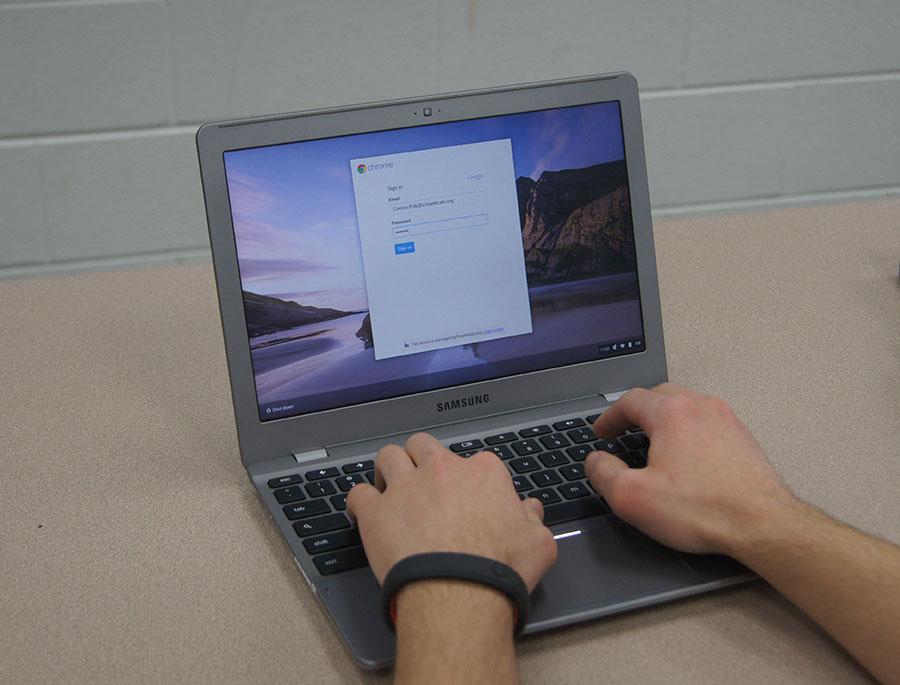
Chromebooks, scheduled to be distributed to every student in the coming school year (read more on lhsdoi.com), have become an integral part of the curriculum. The Chromebook results appeared the most drastic in regard to the amount of bacteria present. Anthony Milunas, a junior, has never feared germs. “I just feel like they are tiny enough that they don’t really affect me in the long run. I mean, I wash my hands after handling anything dirty so germs aren’t really a big deal, especially since Chromebooks aren’t that dirty.”
When shown the results of the germ cultivation for the Chromebook, his reaction seemed to change: “I use Chromebooks almost every day in one class or another and have never thought of them as germ-infested. That’s nasty. To be completely honest, I don’t know if I want to touch the Chromebooks tomorrow!” he exclaimed.
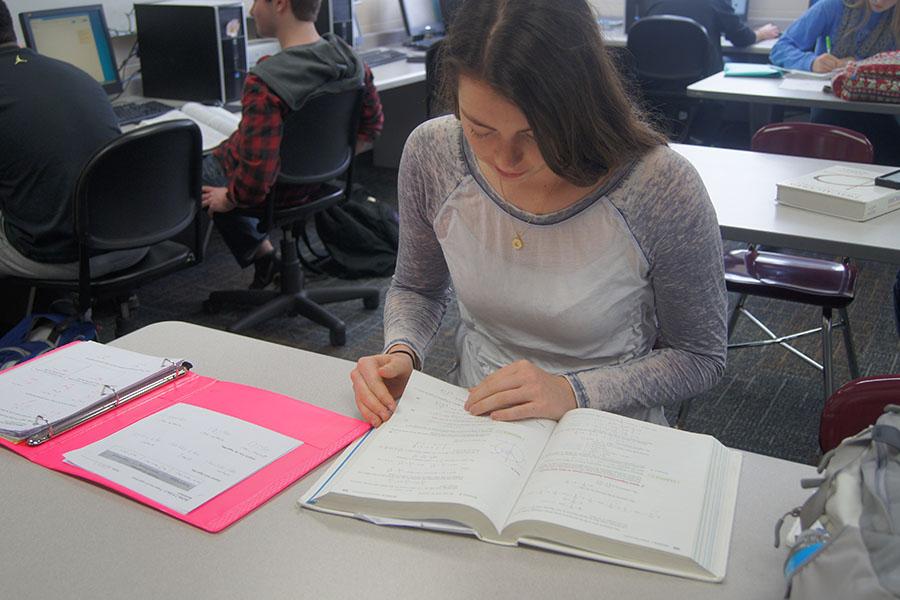
To LHS math teacher Mr. Tim Budge, germs and sickness are just another day at the office. He understands that working with kids means numerous germs and the sickness that follow. Mr. Budge spends his eighth period in the MASH, where he sees the textbooks as a sufficient medium for transferring germs given the frequency with which students use them: “Chromebooks, books, desks; a school, by nature is a germ factory. Kids and adults sneeze. I’m not worried about it, but I know it’s there,” he said. According to Mr. Budge, his immune system has built up over his 18 years as a teacher, which he credits to the germy nature of the school.
Though Mr. Budge sees the school as a “germ factory.” he was a little surprised when he saw the results of the test: “It’s the nature of the beast. We are in a school of 2,000 students and 100-plus, maybe 200 people who work in the school, so I understand there are going to be a lot of germ hazards. It’s hard to prevent. I don’t know if we could wipe down every single [book]. I think you are kind of aware of it, but when you see it, you are like wow!” he commented.

Junior Dolores Palmieri stops regularly throughout the day at the drinking fountain to fill up her water bottle. Palmieri, having taken a biology honors class as a freshman, knows all too well the germs around the school. “So many people get their faces up close to the nozzle! I feel like it is filled with germs. Also, the knob that you press down on must be gross too! People touch that and then go and touch their eyes or food! Germs will circulate that way,” she explained.
When shown the results, as much as she had prepared herself with her prior knowledge, Palmieri was still in a slight state of shock. Her reaction: “It’s a good thing they sell water in the lunch line.”
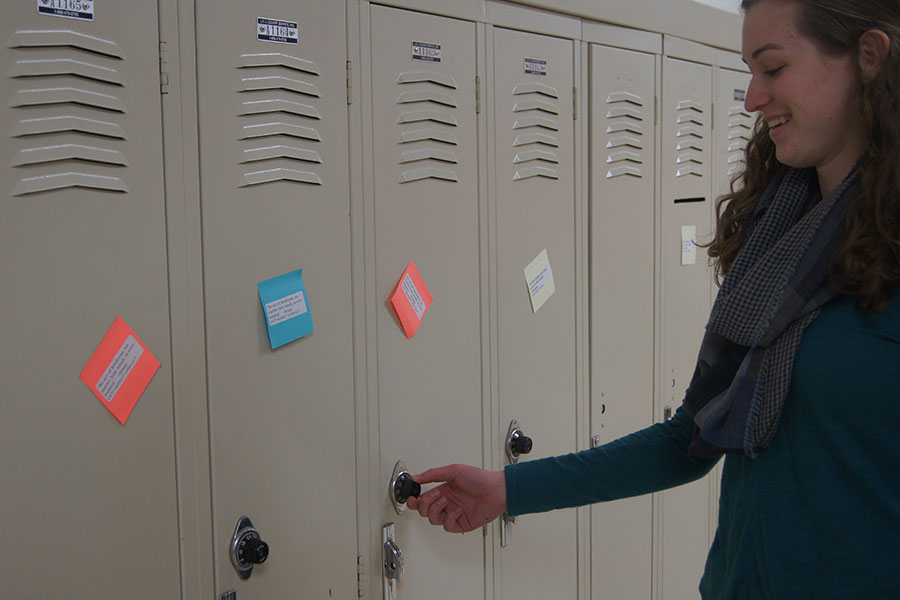
Individuals who partake in messing up the locker dials in random hallways for the pleasure of ruining someone’s passing period don’t know what they’re getting themselves into: a thick heavy pile of plague and disease. Junior Sarah Broughton’s expression was priceless when shown the petri dish containing the germs from the crevices and crannies of her locker dial: “It’s not like it is constantly being touched for extended periods of time. I mean, each time I touch my locker dial I only touch it for a few seconds,” Broughton pondered aloud.
But, now a days, people sneeze and touch, pick and rub, without hesitation. And what do we touch every day, several times a day? Yes, that’s right, your locker dial. After seeing the results of the swab, Broughton began to realized the predicament that was upon her. She stated,“I couldn’t even avoid touching my locker if I wanted to. It is such an large part of my routine. So it’s basically impossible for me to avoid those germs.”

